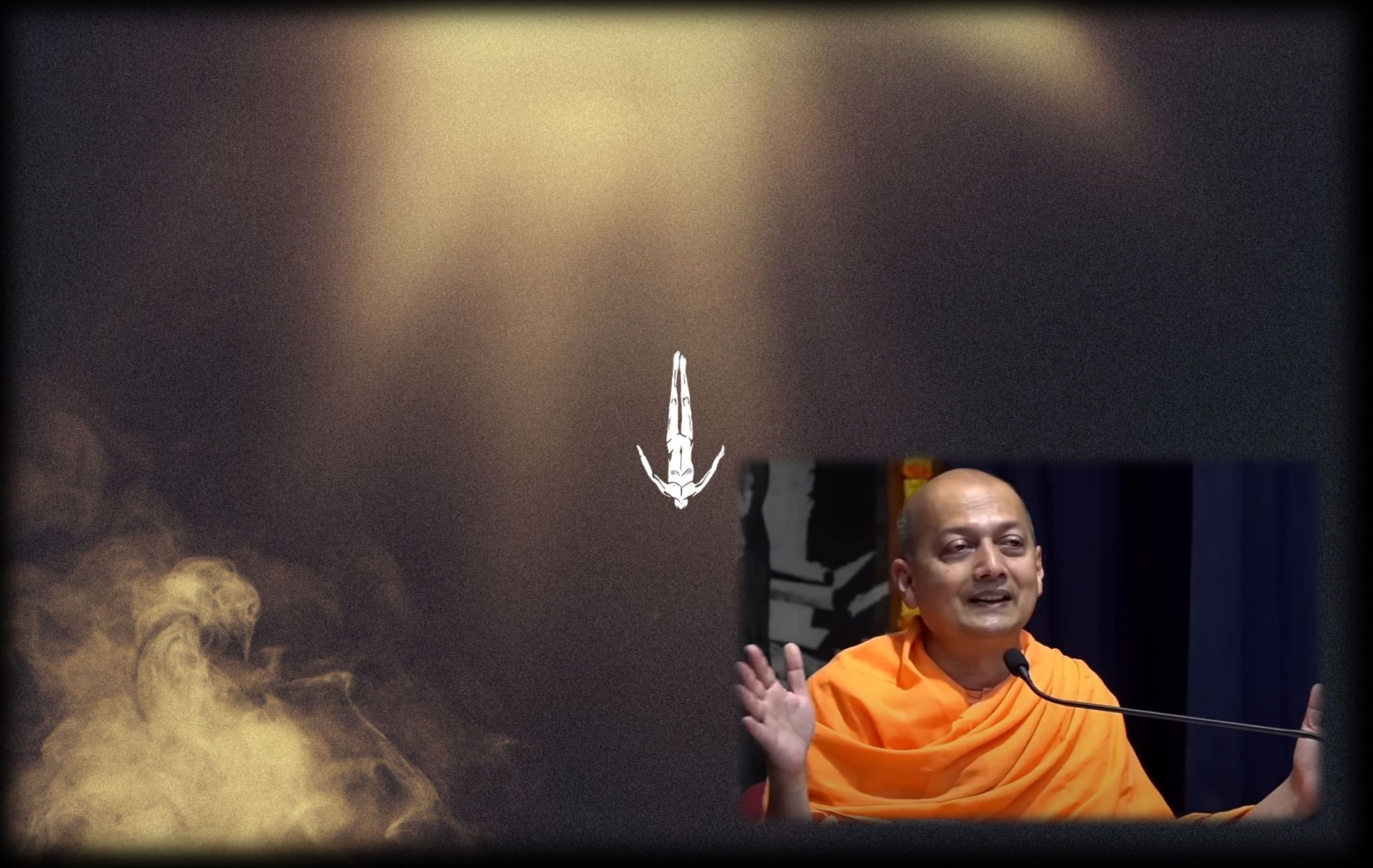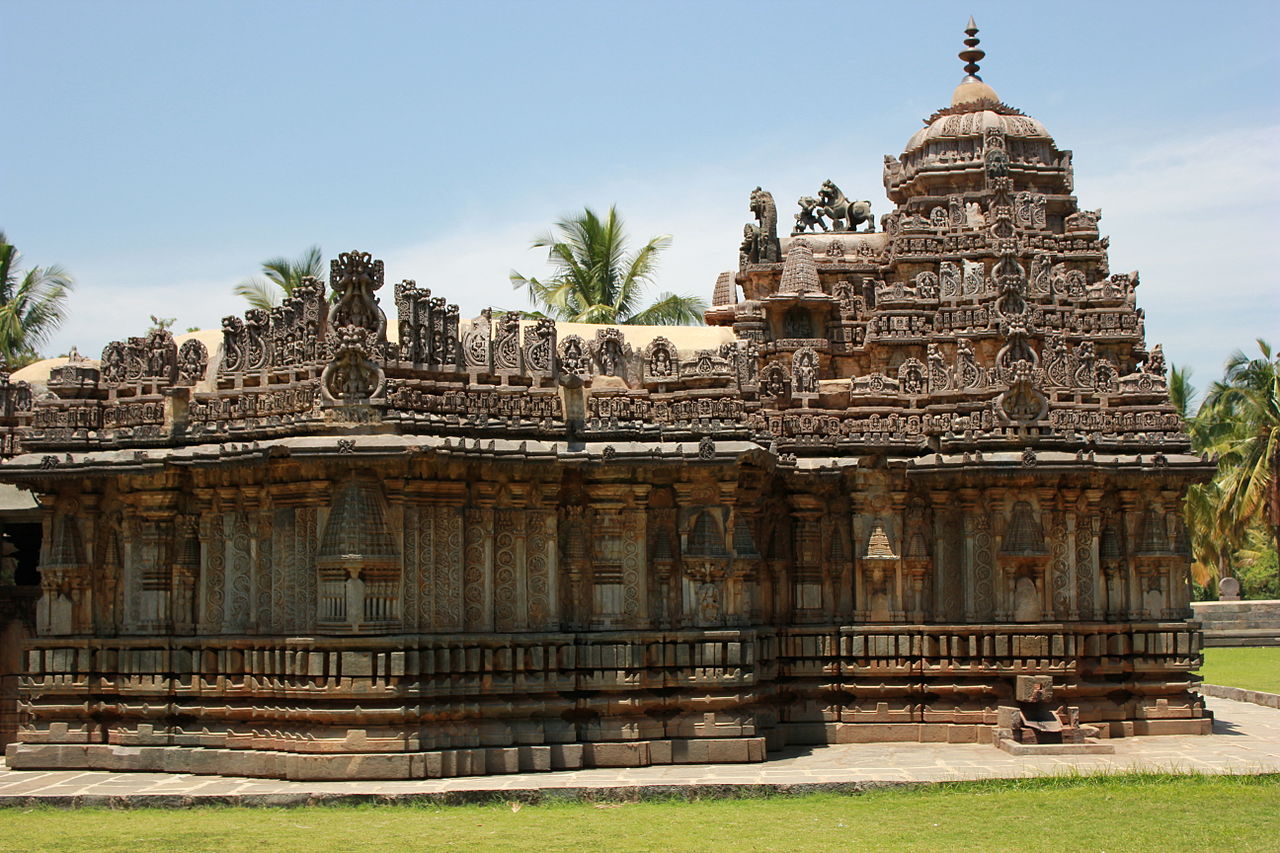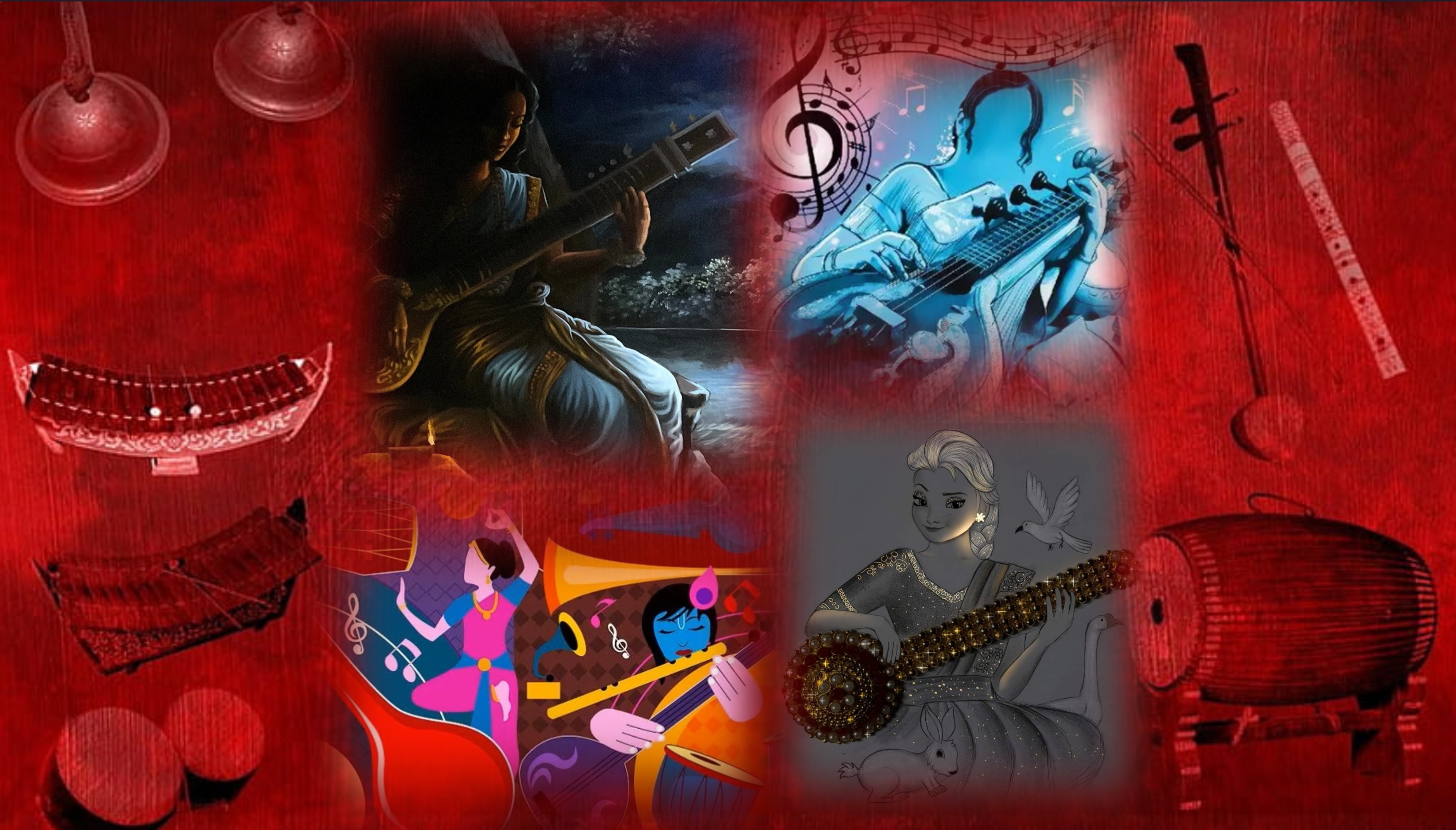- Visitor:22
- Published on:
What is God? Where is God? (Part 1)
The Upanishads represent such a revolution and paradigm shift in human thought that the history of civilization and mankind should not be dated as AD and BC. This is very ethnocentric. Rather it should be dated as before the Upanishads and after the Upanishads.

The following content is edited by Rajabhishek Dey (Centre for Indic Studies) from a talk by Swami Sarvapriyanandaji, at Ramakrishna Math, Basavanagudi, Bangalore. Being his admirer, the summary of the original speech by Swamiji is rewritten and reshaped in this article format with an intention to spread his voice more for our readers. The discussion is taken from the YouTube channel of RKMB, Bengaluru.

Ludwig Wittgenstein is considered to be one of the greatest philosophers of the 20th century. Whatever he would say in class, if someone ever ask him later he used to say “You have misunderstood. I did not say that. I did not mean that!”. Once one of his students wrote down what this philosopher stated in the session and then in the next class he claimed, “Professor you said like this. I wrote it down exactly as you said it. I’m reading it out to you what you said in your own words”. But Wittgenstein replied, “Ah! But you don’t mean what I meant by those words”.
Thus, when someone any Brahma gyani or an enlightened person say “All is God” and when we say the same thing there’s a huge difference. Srimat Swami Suhitananda ji Maharaj one of the vice presidents of Ramakrishna Mission told us one story about Swami Premeshanandaji who was a disciple of Ma Sharada and also regarded as the Brahma Gyani. Often he used to tell Suhitanandaji, a brahmachari serving him, “I’m going to tell you a great secret. Make sure nobody is listening. You know Sri Ramakrishna is God, an avatar of God. God has come as an avatar again as him”. And, every time Suhitananda Maharaj used to reply, “Yes Maharaj everybody knows and nobody cares”. Thus, we see the first person for whom God has actually become real is an ever-present reality for him. That lord of the universe in this form, this day and age has appeared so close to him in time and space. What an incredible thing to say. Later Swami Premshanandaji asked Swami Suhitanandaji pointing to the pictures of Ma Sharada, Swami Vivekananda and Sri Ramakrishna, “Are they pictures to you or do you see them as living?”. The other one immediately replied, “Living. They are living”. See that difference here. Can we bridge that gap between “talk” and living presence of God? We can honestly say that God is here now directly visible to a visible experienceable to us.
From here, we will start at the top of Everest. My favorite subject- Advaita Vedanta!.. and will end there also.

From the Advaithic perspective we know that the Upanishads grandly proclaim to us- Tat Tvam Asi. That there is this infinite existence, Consciousness, Bliss… one being from which this entire universe has emerged… in which this entire universe exists… into which this entire universe disappears. That being alone in itself is the reality- the universe of names and forms is an appearance. That being, that infinite being is called sat. Sat just means existence. One of the greatest philosophers of the 20th century, Martin Heidegger from Germany, in his “Introduction to Metaphysics” discusses the most important and difficult topic. However, this has been ignored by Western philosophy. What is that? It is the question of “being” or existence itself.
✓Why does this exist or why does that exist?
✓How is the World created?
✓Why does the world exist?
✓Why does anything exist at all?
✓What is existence itself?
It seems like a simple question but he says, “This question is the most profound”. This is because, he explains, “The question of existence itself is the widest, deepest and the most fundamental one”. Now, why is it the widest question?… Because everything is included under this question. If you ask a question about living beings then only living things are included. Again, if you ask a question about fundamental particles only material particles are included like atoms, protons, nutrients and quarks, if you ask a question about mathematics then only numbers are included. But, if you ask a question about existence then what is not included? Everything is included, anything that exists is included. Nonetheless, if somebody is very clever here might say, “Well things that do not exist are not included, non-existence is not included”. But the non-existent things which do not exist- they never exist. So, they need not be included at all. So everything that exists is included in this question. Then, what is existence? It is the widest question. Again, the question of existence, Heidegger says is the deepest question. Now, why the deepest question?

In the hierarchy of knowledge, there are more and more fundamental questions. So, if you ask a question about the body human body physiology will answer that question. But deeper than physiology is biology (physiology is included in biology). Deeper than biology is chemistry, all chemicals you know and all biology is based on matter. Deeper than chemistry is physics (deeper in the sense of a more fundamental science). Then, Martin Heidegger states the most fundamental and the deepest of all questions is the question of existence. And, now he says that it is also the most fundamental of questions. This is because it is a question that asks about itself. When you ask about existence you’re asking about everything in the universe, you’re also asking about the question itself. Now, it cannot be denied that the question exists. So in that sense, this is the widest, deepest and most fundamental question. And from here, the answer from the Upanishads was that sat (being) or existence itself is the Ultimate Reality.
Further, we say in the Upanishads that the Ultimate Reality is Sat-Chit-Ananda or the existence, the Consciousness and the Bliss. Those who have studied philosophy will immediately recognize the three branches of philosophy broadly.
❶ Ontology (what used to be called metaphysics)- the study of reality and asking what is real.
❷Epistemology (how do we know anything)
❸ Axiology (It is a broad area of- what is the goal of life, what is good and what is bad, and what is beautiful, including several branches earlier like aesthetics, ethics etc. and now they have all been clubbed under a new name axiology)- the question of value, purpose, beauty, goodness (what is the point of it all)
Now immediately you can see if you think of Brahman it is sat, chit, ananda.
What is reality? The answer is “sat”.
How is any knowledge, experience, anything or any of this experience of life? The answer is “chit”.
And, what is the point of it all? Value of it all? It is “Ananda”.
Thus, Ananda is the grand conception of the Ultimate Reality in the Upanishads.


Professor Evan Thompson from the University of British Columbia in Vancouver in the beginning of his book on Consciousness studies “Waking, Dreaming, Being” says that consciousness study is not a new field though we think it’s latest 21st-century field. It’s not a new field and was started by the Upanishads of India thousands of years ago. Then, he quotes another philosopher in that book saying that the Upanishads represent such a revolution and paradigm shift in human thought that the history of civilization and mankind should not be dated as AD and BC. This is very ethnocentric. Rather it should be dated as before the Upanishads and after the Upanishads.
(Although, we, as Indians and as Hindus don’t dare to make such bold proclamations)
We find Shwetaketu’s father telling that before this entire universe appeared, there was “one” existence. The young boy who was already a little arrogant because of being full of knowledge might have shrugged at this statement. So, then his father tells him- “tat tvam asi” or “You are that existence, that infinite being or sat chit ananda. You are that infinite being!”.
So this is the grand equation, grand identity in the Upanishads.
Now, where do you find God in that ultimate identity?

The Christian, theologian and mystic, Meister Eckhart, 500-600 years ago in Germany beautifully express, “The ground of my soul and the ground of God are one in the same ground”. Literally, the meaning is the same as tat tvam asi. This goes the same for other mystical traditions also. However, to make the idea rational, logical and to develop a step-by-step approach to appreciate, understand and realize, the only process is nowhere but in Advaita Vedanta.
When we often quote Swami Vivekananda saying “Just as a Bible is for the Christians, the Torah for the Jews, the Zendavesta for the Zoroastrians, Tripitaka for the Buddhist, Quran for the Muslims for us, the Hindus, the Vedas are the scriptures” we miss the next part. The next line states that the Bible, Quran and the Torah and are like our Puranas and like the Upanishads, there is no other literature in the world”. This has incredible depth and fearless probing into the Ultimate Reality.
So the grand identity of tat tvam asi means, “That you are”. And “tvam tat asi” means that “You are that”. When you say, “You are that Brahman”, it means that, “I am not the body, not the mind but I am that existence, consciousness and bliss”. However, this also means that neither as this person nor as this human being I can say that I am God.

But, when you say “I am God”, as per Advaithan immediately you are attacked by Vishista Advaita and Dvaita as sacrilegious. They argue by saying, “How can you, being a mere jiva be a Shiva? You are powerless (alpashaktiman against sarbashaktiman) and have little knowledge (alpagy against sarbagya). You are limited (paricchina). You are born and die again, born and again you die. In front of this immortal which is not subject to birth and death that all-pervading, all-knowing and all-powerful God how can you claim to be Him?”.
But, here the Advaithan is not saying that. He answers that “When we are saying Aham Brahmasmi, I don’t mean this personality. You have to deconstruct this personality. Investigate into your experience of yourself and then you realize”.

So when Shankaracharya sings- “Chidananda Rupoham Shivoham Shivoham”- That’s not the first line of Nirvana. The first line is what we identify ourselves with all the time, these thoughts, these ideas, these memories and this ego! First, you have to deny that. Go through that process of “neti neti” or “not this, not this” and then you realize. Even the ego has to be denied.
If you actually translate- “Mano buddhi ahankara chittani naham” into English it will be “I am not I”.
How is that possible that I am not “I”?
See this mind, the thoughts, the intellect and the memory are all appearing in me the Consciousness. Even the sense of ego is also appearing in me- the consciousness!
Ego is also an object of consciousness.

If we realize that the pure unlimited consciousness is only what I am then only we can say “Chidananda Rupoham Shoviham Shivoham”. And the opposite of that is scarier to understand which says “Brahman is you”. That means, “Other than you there is no Brahma, Vishnu, Maheshwara, no Devi, no Ganapati”. All of them are in reality “you”. When the Advaitin is asked, “Are you denying the existence of God?” or like a Dvaitan is questioned, “Is that God a separate object to you?”. In that case, the answer is “No! there is no such God. Nothing like that exists”. But if the Advaitin is asked whether that is the reality about “myself” then God is accepted entirely. With the upadhis of body and mind, you and I are sentient beings. But with the upadhi of Maya, that same Consciousness is Ishwara or saguna Brahman. This is perfectly acceptable in Advaita Vedanta. Above all, all its texts are based on accepting the existence of God. From an Advaitic perspective, God is not distant from you and not in some Heaven. God is not separated from us by time that “after death” I will find God. Thus, where is God? He is now. What is God? It is “me”. It is not separated by vastu (matter), desha (space) and kala (time) and this is the Advaitik conclusion of “where is God?”.
However, the separation is due to ignorance. We don’t see, know and realize it. The bridge lies in moving from ignorance to knowledge or agnana to gnana. There are many procedures toward knowledge and they are called prakriyas. But all of them are just pointing out something that’s already existing. When we understand what they are talking about we are “Oh this is what it is it was always there. I just didn’t see it. This body is an object to my awareness”. Also, we see the thoughts of which I’m aware of. Then what is it that is aware?

Cogito, ergo sum, (Latin: “I think, therefore I am) a dictum coined by the French philosopher René Descartes in his Discourse on Method (1637) is the way to find out what is the thing that one can be certain of. Everything in this world can be doubted, what we are seeing now can be a dream like the Matrix movie or virtual reality.

He said, “What is it that certain which cannot be doubted and from there I will build up all knowledge”. So this is the great skepticism of Descartes. And, it is almost a Vedantic kind of inquiry.
I doubt this so this cannot be certain but one thing I cannot doubt. “I” am thinking and “I” doubting that “I” cannot doubted. Nonetheless, that certain existence he does not investigate on it any further. One very poignant line in the meditations of Descartes is there, where he says, “How strange it is that of which I am most certain I do not know anything about it and which I know a lot, I am not at all certain about it”. I know so many things in the world but I can never be certain about them. But surely I exist but what is it that I am- that Descartes did not investigate. He went on further into the world again.

Vidyananda Swami, 300 years before Descartes in the Vijayanagar Kingdom begins where Descartes was going to leave off. There he begins to go inwards. In his slokas he states, “I have so many experiences in this world, hearing, smelling, tasting, touching, thinking, remembering, desiring, hating waking, dreaming, sleeping all of these are coming and going. Apart from them, illumining all of them is one samvit”. Consciousness is one and constant. It does not come and go. It is permanent. In that sense, it is sat. Further, he shows just by experience (the kind of experience which we are all having right now) and points out by reason that this is samvit or Consciousness. Yes, it does not come and go. It ispermanent in that sense it is “sat”. And, then he shows how this samvit is Ananda. Next, he asks, “Now, open the Upanishad. This is called Brahman!”. In his amazing demonstration of eight verses, he has shown the entire Upanishadic teaching without referring to the Upanishad.

He said, “Before opening the Upanishad take a look at your own experience. I will show you that you are Brahman right now, right here, forever. Then, open the Upanishad. You will see the Upanishad is telling you what you are already experiencing”. So this is the grand conclusion of Advaita Vedanta, whether you do it through Dṛg-Dṛśya-Viveka, panchakosha or any other ways. In the Upanishad they are all prakriyas and these procedures are developed to show us what we are.
To be continued…
Main video link:
Center for Indic Studies is now on Telegram. For regular updates on Indic Varta, Indic Talks and Indic Courses at CIS, please subscribe to our telegram channel !
- 11 min read
- 0
- 0










